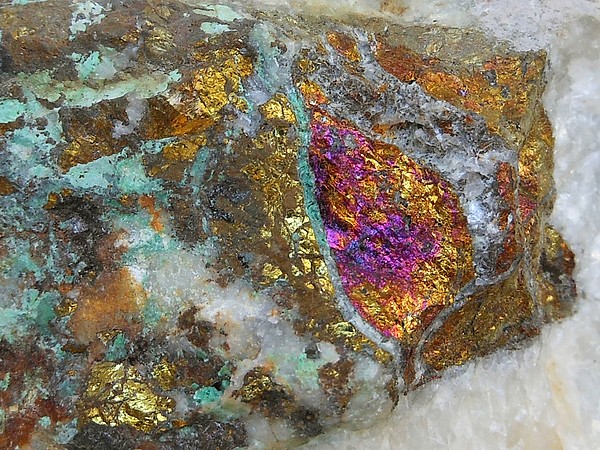Aparis Mine – the subsoil richness of the Barrancos region
Last Updated: 16th Aug 2017By Rui Nunes
Aparis Mine – the subsoil richness of the Barrancos region
The recent history of Barrancos has an obligatory stop at Aparis mine. The mining activities there developed have left strong records that today are missed. The forgetfulness and deterioration of this region's main mining center should serve us as a reflection on the way we treat our own history and how we ignore the good opportunities to honor and appreciate our heritage.
On the other hand, abandonment that the mining areas were subjected to is the cause for a great concern. The landscape and environmental degradation which affects the majority of them may bring serious consequences on the relationship between the community.
Given the importance that people have on the local sustainability, especially when it comes to the interior municipalities, where population aging and depopulation are real threats, promote territorial competitiveness, based on a evaluation of the resources and local values is of fundamental importance. Although globalized the resources and people are still from the region. The mineral resources are among those most distinguished by its local character and its importance in local sustainability.
For more than twenty years (1953 to 1975) the activity of this main copper mine in the South region of Alentejo was without a doubt the most valuable contribution that the municipality of Barrancos received in the second half of the 20th century, either by the expansion of the exploration itself (with housing for miners and their families - working-class neighborhood, the locker rooms for the resident school teacher, a doctor, bread oven and technical director of residence) or by cultural adjustments that promoted population of Barrancos through the numerous workers dragged into this zone.
The interest aroused by the metalliferous mining field of Barrancos resulted in more than thirty mining licences:
1 – Ferragial do Barbeiro 2 – Pedra do Galo 3 – Barrocal 4 – Malhada das Vacas 5 – Serra de Minancos 6 – Serra Colorada 7 – Volta da Ferreira 8 – Sítio da Vinha 9 – Charco Frio 10 – Gamito 11 – Vale de Noudar 12 – Ordem, Lírios 13 – Segunda Mercês 14 – Sítio do Palácio 15 – Defesa das Mercês 16 – Capelães 17 – Aparis 18 – Conceição 19 – Touril 20 – Malhada dos Caeiros 21 – Vale de Marcos 22 – Malhada dos Barrinhos 23 – Cerro da Eira 24 – Veiga da Vinha 25 – Baldio de Noudar 26 – Voltas Juntas Noudar 27 – Piorneiros 28 – Barrancais 29 – Pirâmide Geodésica da Butefa 30 – Umbria das Ferrarias 31 – Serra da Butefa 32 – Forninhos
The mines that were known to have a productive extraction and to pay the mining taxes were reduced to eight from which were extracted (between 1885 and 1932) approximately 10.930 tons of ore and copper. So the quantities extracted were distributed as follows:
Aparis mine – 5.265 tons
Umbria das Ferrarias mine – 3.599 tons
Minancos mine – 1.187 tons
Defesa das Mercês mine – 480 tons
Serra da Butefa mine – 249 tons
Vale de Marcos mine – 113 tons
Pirâmide Geodésica da Butefa mine – 21 tons
Veiga da Vinha mine – 16 tons
Aparis was the only mine from the municipality that figured in the International Geological Congress in Washington in 1933.
The Ossa Morena zone is a major tectonostratigraphic unit situated in the southwestern margin of the Variscan belt of Europe. It is one of the most complex terranes in the belt and contains sedimentary rocks belonging to a complex polyphase accretionary system ranging in age from late Riphean to late Carboniferous.
The geotectonic evolution of the Ossa Morena zone also involves the intrusion of large volumes of igneous rocks belonging to three magmatic events: the Cadomian orogenic cycle, the Variscan orogenic cycle, and an intermediate extensional phase of early Paleozoic age. This geologic evolution has produced an abundance of diverse ore deposits and mineral showings, including iron-oxide skarns and replacements, magmatic Ni-(Cu) deposits, and Cu-(Au-Bi) veins, making the Ossa Morena zone differ metallogenically from adjacent terranes that host abundant volcanogenic massive sulfides (South Portuguese zone) or gold-bearing mesothermal systems and shallower W-Sn and Cu-Pb-Zn veins (Central Iberian zone). Most of the ore deposits of the Ossa Morena zone are related to both the Cadomian and Variscan orogenies.
…
There are more than seven hundred mineral occurrences in the Ossa Morena zone.
…
Ref: Plumbotectonic Evolution of the Ossa Morena Zone, Iberian Peninsula: Tracing the Influence of Mantle-Crust Interaction in Ore-Forming Processes - Fernando Tornos, Instituto Geológico y Minero de España, Spain, and Massimo Chiaradia, Department of Mineralogy, University of Geneva, Switzerland. Economic Geology, Vol. 99, pp. 965–985.
The geotectonic evolution of the Ossa Morena zone also involves the intrusion of large volumes of igneous rocks belonging to three magmatic events: the Cadomian orogenic cycle, the Variscan orogenic cycle, and an intermediate extensional phase of early Paleozoic age. This geologic evolution has produced an abundance of diverse ore deposits and mineral showings, including iron-oxide skarns and replacements, magmatic Ni-(Cu) deposits, and Cu-(Au-Bi) veins, making the Ossa Morena zone differ metallogenically from adjacent terranes that host abundant volcanogenic massive sulfides (South Portuguese zone) or gold-bearing mesothermal systems and shallower W-Sn and Cu-Pb-Zn veins (Central Iberian zone). Most of the ore deposits of the Ossa Morena zone are related to both the Cadomian and Variscan orogenies.
…
There are more than seven hundred mineral occurrences in the Ossa Morena zone.
…
Ref: Plumbotectonic Evolution of the Ossa Morena Zone, Iberian Peninsula: Tracing the Influence of Mantle-Crust Interaction in Ore-Forming Processes - Fernando Tornos, Instituto Geológico y Minero de España, Spain, and Massimo Chiaradia, Department of Mineralogy, University of Geneva, Switzerland. Economic Geology, Vol. 99, pp. 965–985.
Other data sources: SOL Noudar, de Barrancos para o mundo and Arquivo Municipal de Barrancos.
Article has been viewed at least 6842 times.




















